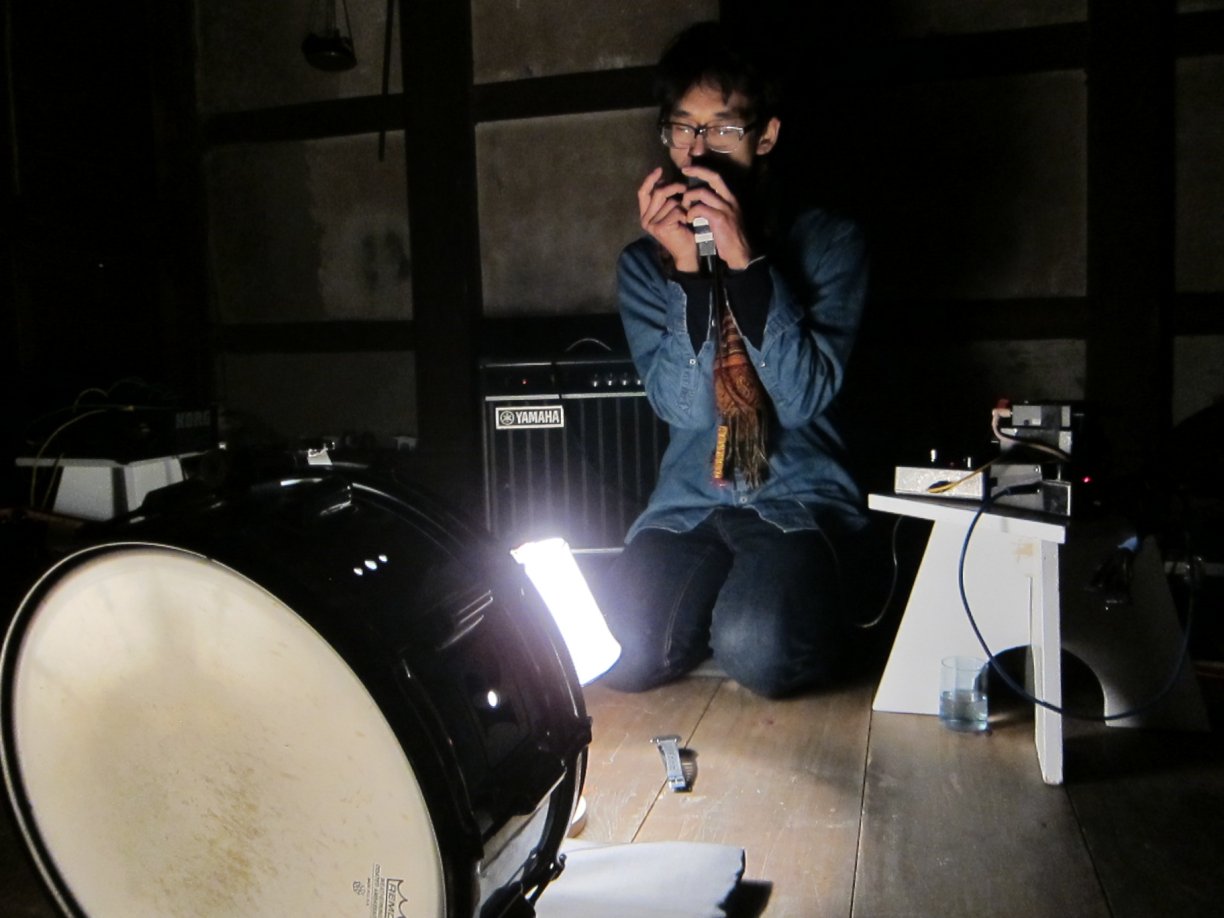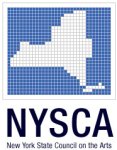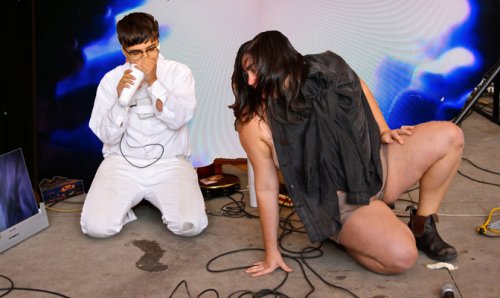New instruments/structures, redundant tunings, simple harmonic relationships, sympathetic vibrations. The basic idea: one sounds because of its likeness to another of the same (or a harmonically related) pitch. These two vibratory bodies reinforce one another even as they decay; each slowing the other’s return to stillness.
Drawing on Indian music, Minimalism, and the outsider tradition of instrument building composers, Che Chen and Sherlock Terry‘s collaborative work is rooted in the sonic potential contained within a single note. Using zithers and monochords that they have built or modified to their own designs, the sound world of the piece is one of harmonic tunings, vibrating strings, long, resonant decays and meditative, minimal structures. The impetus for the piece was a mutual interest in working with “sympathetic vibration”, an acoustic phenomena wherein a vibrating string will cause other strings to vibrate because they are tuned to the same (or a harmonically related) pitch. Sympathetic strings are found on Indian instruments such as the sitar and sarangi, as well as some European instruments, such as the Norwegian hardanger fiddle, and are responsible for much of the characteristic reverberant quality of those instruments’ sound. Chen and Terry have devised customized instruments that feature large numbers of strings (as many as 80 on a single instrument) arranged according to highly redundant tuning schemes designed to maximize on the occurrence of string sympathy.
These instruments–in particular a modified autoharp and European concert zither–are designed to reveal the subtle interactions of closely tuned strings as they sound and decay. Plucked single notes surrounded by halos of sympathetic vibration, chords made of shifting, sustained drones and cascading, harp-like washes of sound are made possible through playing techniques both borrowed and invented. Compositionally, this piece is intended to create an unhurried, focused listening experience, an immersive sound environment that lends itself easily to a slowing of sense perception. Structurally, it borrows much from what is known in North Indian classical music as the alap, the slow, preliminary stage of an improvisation in which the notes of the scale (raga) are gradually introduced one at a time.
The work will be presented in a spacialized, four channel surround sound system situated within the reverberant natural acoustics of Our Lady of Lebanon Cathedral.
Che Chen is a sound artist and improviser based in Brooklyn and Stonybrook, New York. Largely a self-taught musician, Che uses the violin, guitar and other musical and “non-musical” objects in works that explore his interests in perceptual phenomena and improvisation. His recent solo performances have consisted of improvisations based on the harmonic overtones of idiosyncratic tunings (scordatura) for the violin, played against sine wave pedal points. Che’s interests in difference tones (closely tuned pitches that result in beating patterns), phasing, repetition, decay, the spacialization of sounds, and the structural relationship between “audience” and “performer” have led him to use a variety of methods that include using analog tape delay systems, loops and manipulation, placing acoustic and electronic sound sources in various locations around the performance area, and generally eschewing the idea of “the stage”. He is interested in music and sound principally as a means of being in time; as a way of radically inhabiting the present.
Che has toured in the U.S., Europe and Japan, presenting solo performances and collaborations with Jozef Van Wissem (Heresy of the Free Spirit), Robbie Lee, Chie Mukai, Tetuzi Akiyama and other spontaneous and ongoing configurations. Che is also one half of the band, True Primes, and has collaborated with artists, Mary Walling Blackburn and Sherlock Terry. Solo and collaborative recordings have been released on Locust, Incunabulum, Autumn, Telegraph Harp and Pilgrim Talk Records. As an anthologist, he has produced the private press artists’ magazine, O Sirhan, O Sirhan, a publication inspired by Wallace Berman’s Semina, Aspen Journal and the Fluxus design work of George Maciunas, and Attention Patterns, a 2 LP + 48 page booklet set featuring minimalist works by Pauline Oliveros, Eliane Radigue, Yoshi Wada and Sun Circle. He runs his own label, Black Pollen Press, as an outlet for these and other endeavors.
Sherlock Terry is an artist and interactive exhibit designer based in North Hyde Park, Vermont. His work investigates human sense perception through the physical experience of both architectural and natural spaces. Sherlock’s work has been exhibited in various contexts including, museums, galleries, art journals, movie theaters, billboards, and a statehouse.




